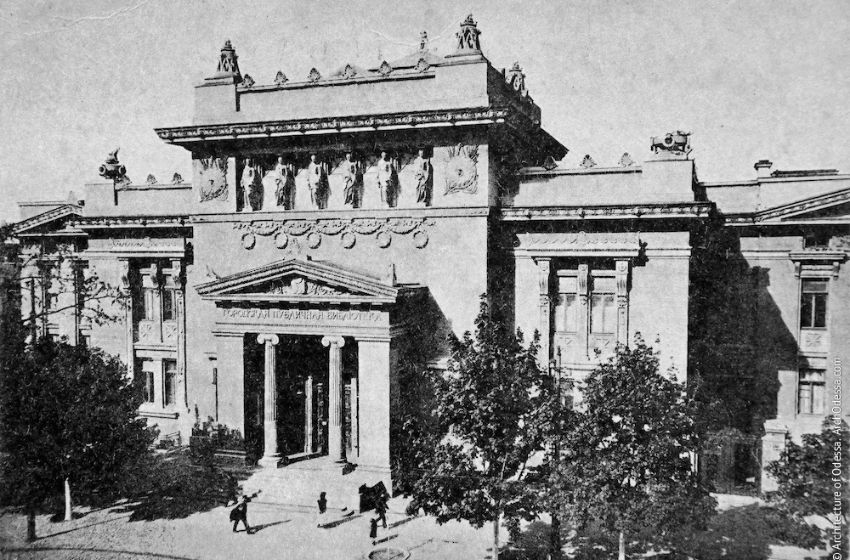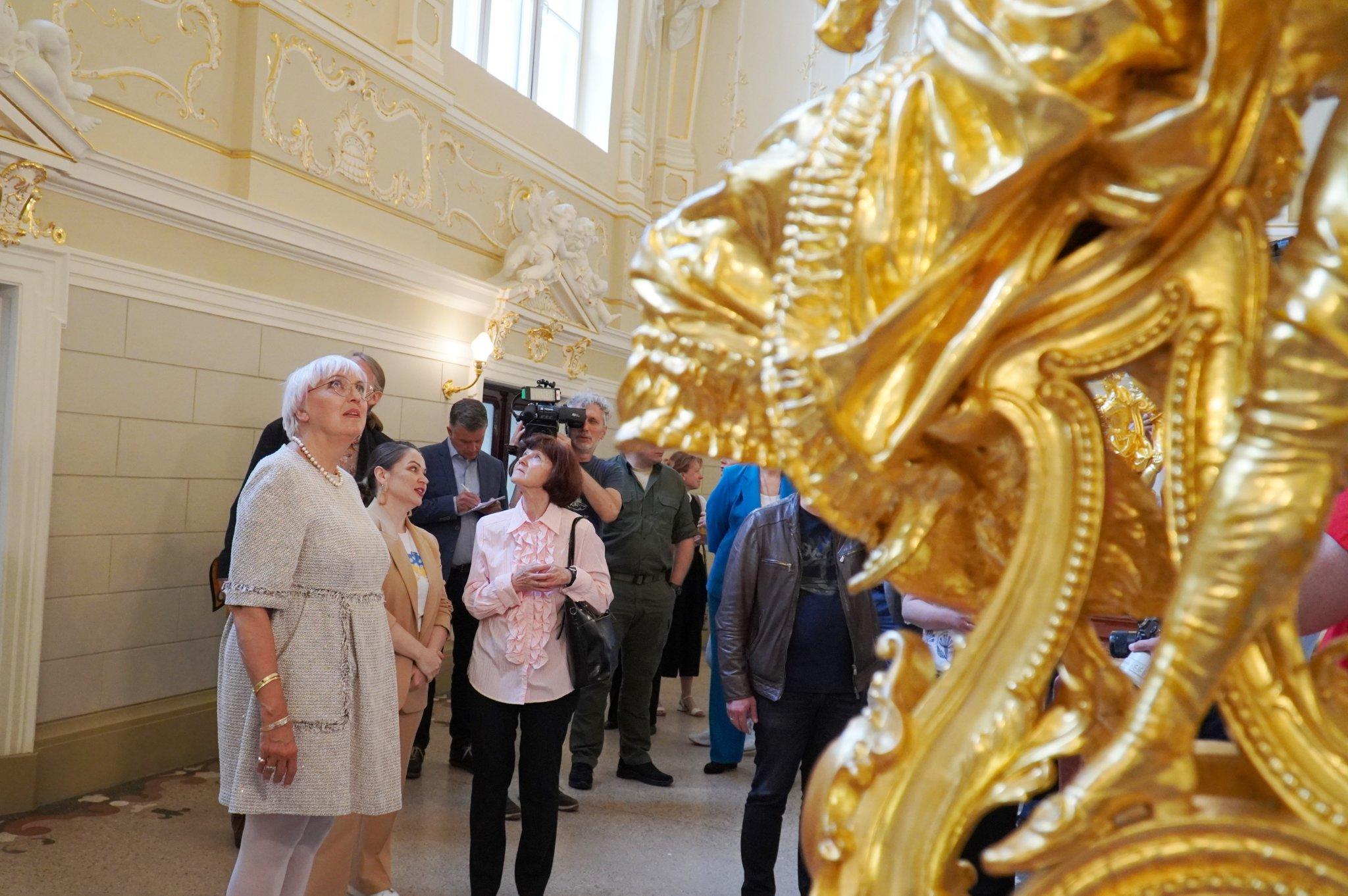Odessa National Scientific Library (Pasteur street 13) is the first public library in Ukraine. Its opening in 1829 marked the beginning of the foundation of public libraries in all cities of Russian Empire. Today, it is the leading socio-cultural center of the South of Ukraine and the research, methodological and coordination center in Ukraine on issues of library science, bibliography, document management.
The founding of library dates back to 1829. Those times, Odessa was fast growing and became the most opened and liberal city in Russian empire. Further to the introduction of the Porto Franco (free tax zone) regime, the City became a big center of international trade. More than 20 educational institutions were active, alongside with the Imperial Society of Agriculture and the Odessa City Museum of Antiquities. Several printing houses worked in the city and a newspaper, the "Odessa Vestnik" (Odessa's Messenger), was publishing since 1827. A theater of 800 seats offered shows to the citizens.
On September 13, 1829, the city public library was founded in Odessa. It was a private initiative of public figures and intellectuals, like Aleksey Lyovshin, editor of the "Odesskiy Vestnik" (which had a French version: "Journal d'Odessa"), with the support of the Governor-General of the region, Count Mikhail Vorontsov, who appealed to the Emperor Nicholas I to issue an order to establish a city public library in Odessa. It was the second in the Russian Empire (after the Imperial Library in St. Petersburg).
Actually, the library was opened on April 15, 1830, because a plague epidemic broke out in Odessa at the end of 1829, By this time, the collection already numbered 5 thousand books.
Count Vorontsov presented the library with "a collection of expensive rare works." These were 600 volumes of French classics in a luxurious edition of Firmin Didot. The wealthy citizens of Odessa followed the example of the Governor, and the number of books in the library began to increase rapidly.
The following collections of literature donated to the library were of particular value: Count. M. Tolstoy (more than 40,000 editions), G.G. Marazli (10,000 volumes), the library of the archaeologist P. A. Burachkov (3,176 volumes) and others. The fund also received foreign donations, since the 50s of the XIX century: the Smithsonian University (Washington), the Universities of Paris, Prague, Beijing, Harvard, the British Museum Library, the National Library of Paris and the Library of Congress in Washington.
A special place among the Trustees of the Library belongs to the honourable citizen of Odessa, Count Mikhail Tolstoy, who was its supervisor within 1897-1919.
Due to the constant expansion of the fund, the library moved several times; in 1883, a separate building was built for the Library and Museum of the Society of History and Antiquities, mainly at the expense of the mayor Grigory Marazli (currently it houses the Archaeological Museum).

In 1907, the library once again celebrated a housewarming, moving to one of the best examples of library architecture in the world, erected by the architect Fyodor Nesturkh. The front part of the main building is made in neo-Greek style with empire motives and modern elements. Above the portico there is a bas-relief in the form of garlands, interspersed with triumphal wreaths. Above them, the architect placed six majestic female figures, caryatids, who hold in their hands books and wreaths of wisdom and knowledge.
In 1922, thanks to the inclusion of the library in the list of the URSS leading library institutions, the library began to receive a mandatory copy of domestic publications. This completed the library with new editions in all branches, published in Ukraine.
In 1924, Odessa public library was subordinated to scientific institutions. In 1930, it was merged with the Odessa State University’s scientific library and the T.G. Shevchenko library. The new library received the name of «Odessa State Scientific Library». On February, 10, 1941 a Decree of Presidium of Supreme Soviet of Ukrainian Soviet Socialist Republic named the Library after «Maxim Gorky».

In 1998, the Library initiated the gallery of honourable benefactors of Odessa, to continue its tradition of patronage in arts.
In 2015, the Odessa National Order of Friendship of Peoples, Scientific Library «Maxim Gorky» was renamed into the Odessa National Scientific Library.
In 2018—2019, with the assistance of the Ukrainian Cultural Foundation, two innovative projects were implemented:
- "Old engraving - the cultural heritage of Ukraine", where for the first time a collection of unique engravings by masters from England, Italy, the Netherlands, Germany, Ukraine, France of the 16th-19th centuries, which are stored in the Library’s fund; remote access to them is provided.
- "Treasures of Ukraine: a digital collection of book monuments in the fund of the Odessa National Scientific Library", which provides remote access to the most valuable rare book monuments from the Library’s fund, subject to entry to the State Register of National Cultural Heritage.

The Library's Fund
The fund of the Odessa National Scientific Library is universal, it contains more than 5.4 million documents in Russian, Ukrainian, English, French, German, Polish, Czech and other languages, including more than 200 thousand manuscripts, early printed books, rare and valuable publications.
The special pride of the library is the department of rare editions and manuscripts, created in 1921. Its first head, Alexandra Nikolaevna Tyuneeva (1888-1984), a well-known librarian and bibliophile, created the first book museum in Ukraine in the library.
The fund of the department has about 40 thousand rarities and is a national treasure of the people of Ukraine. The oldest monuments of Slavic writing of the 11th century are kept here. Among them are the legendary Khilandar and Ohrid sheets, found in the 19th century. the famous scientist V.I. Grigorievich on Athos (Greece), 52 incunabula and 155 paleotypes, a collection of Cyrillic early printed books, including the Ostrog Bible (1581), printed by Ivan Fedorov, publications of the Lviv Brotherhood, Kiev-Pechersk Lavra.
Pictures from Archodessa






















